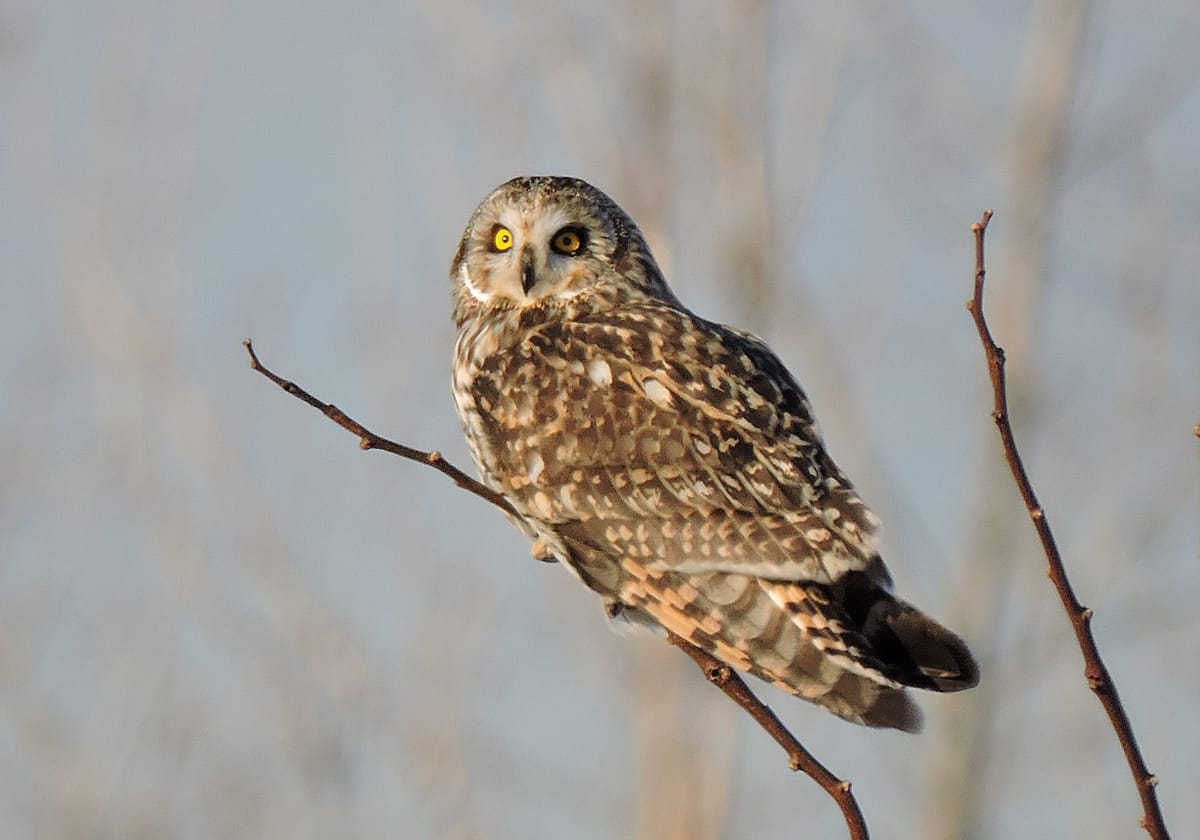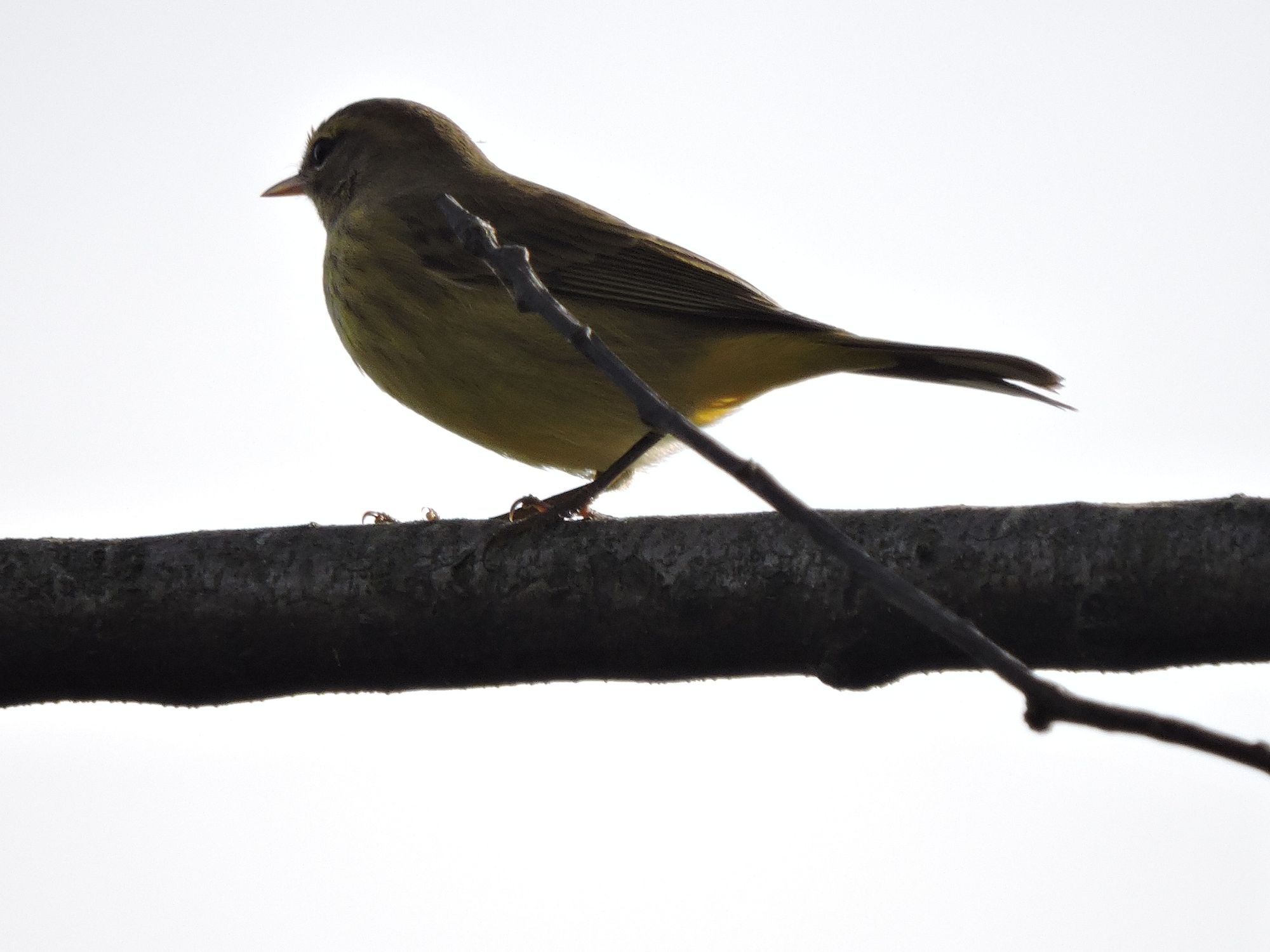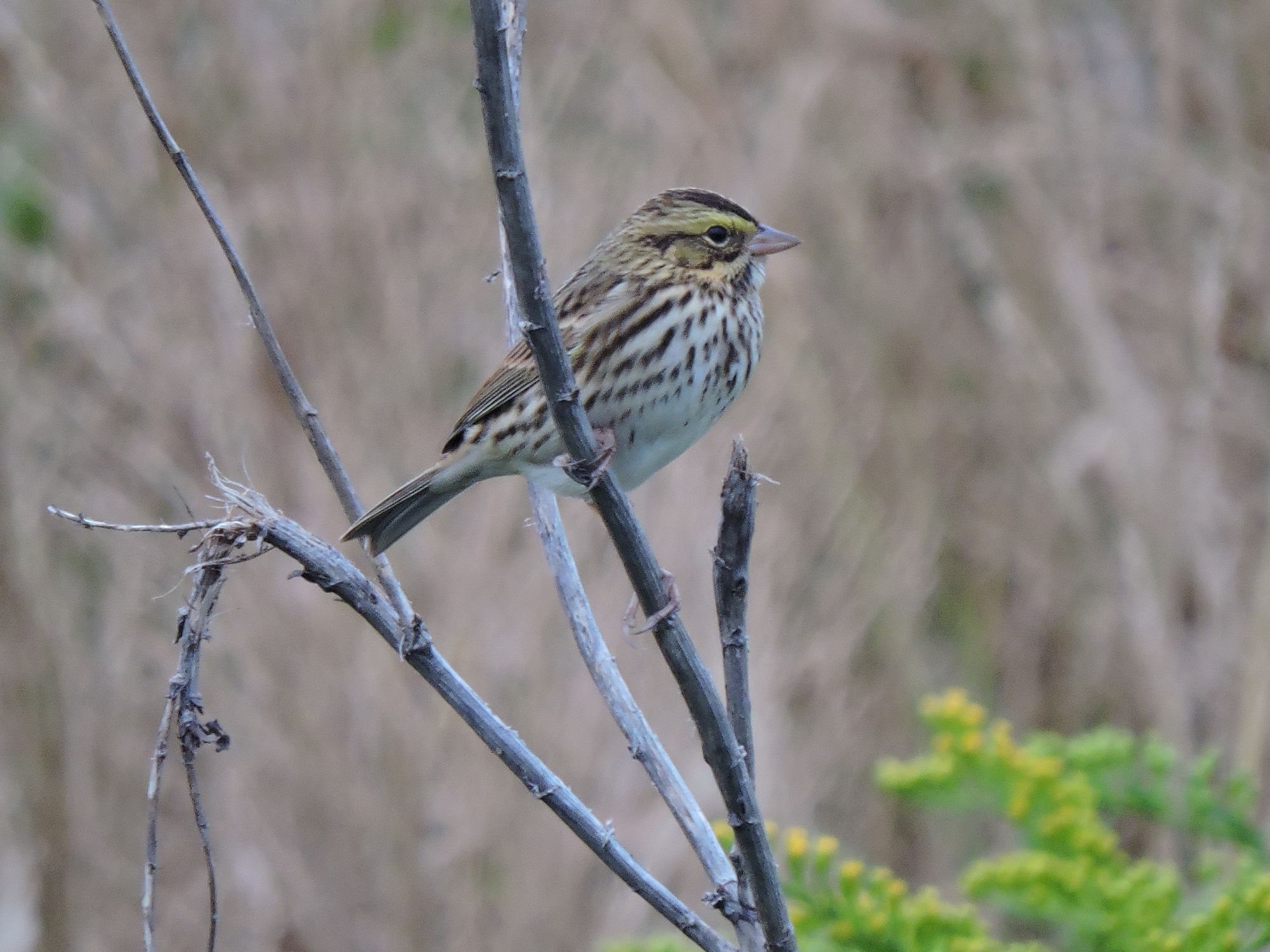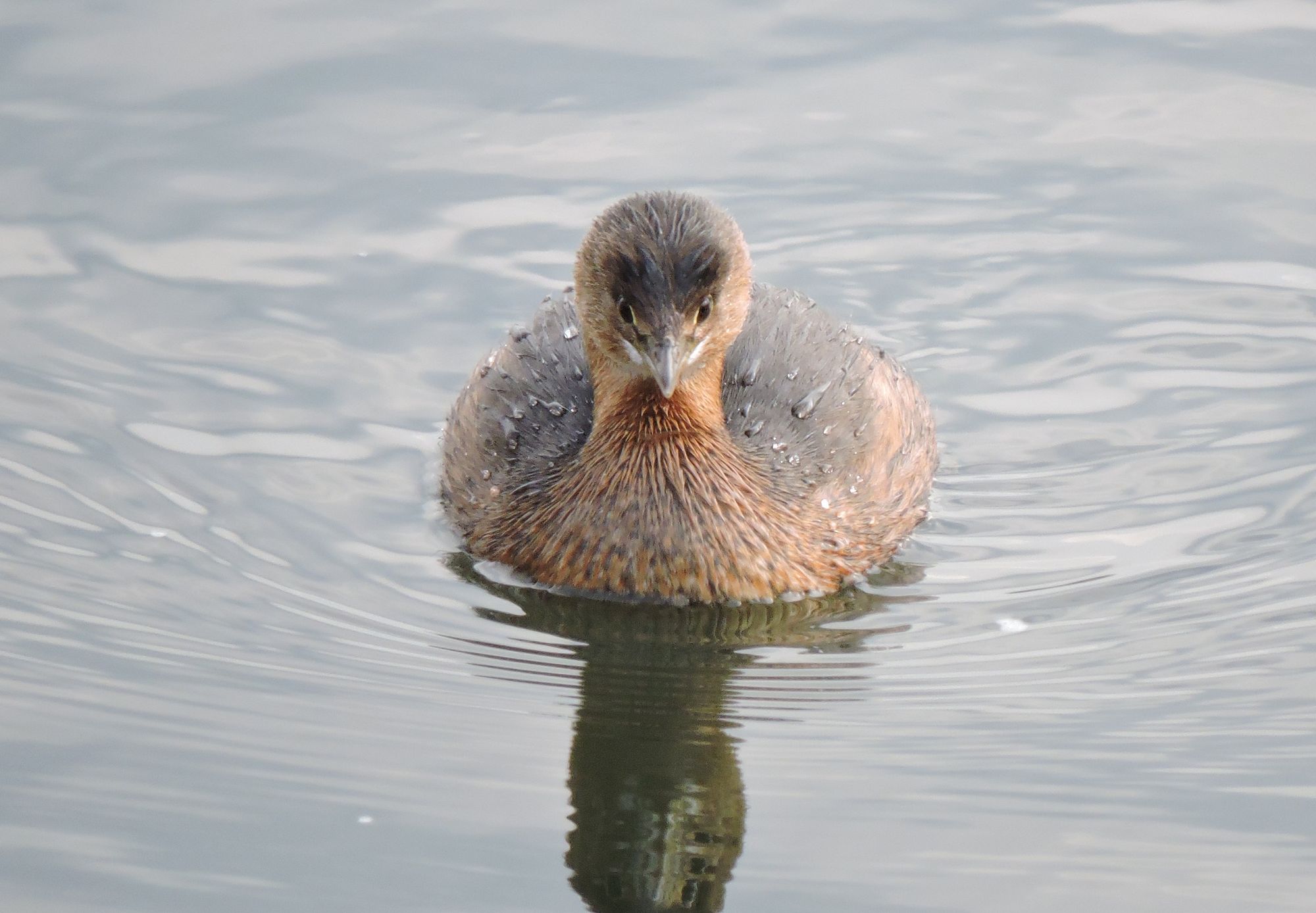Here’s What You Need To Know About The Millions Of Birds Migrating Through Brooklyn


The sky above us is a veritable highway for birds. Right now, and like every fall and spring for the past several millennia, millions of birds are making their along the Atlantic Flyway — a region along the United States East Coast. While some birds, particularly birds of prey, will migrate during the day, our usually daylight loving songsters are moving at night by the scads to avoid predators. In New York City, about three hundred bird species are present at some time throughout the year. While many assume it’s the weather that drives the migration, the birds are actually chasing their next meal.
Where are birds coming from?

In the spring, most of the birds that migrate to here are coming from as near as Florida and as far as South America. For reasons not entirely understood, many of our famous warblers, tanagers, hummingbirds, etc. come up north to raise their young. Some will raise their hatchlings in our parks, while others (like most of the warblers) will continue to the Adirondacks to build their nests.
In spring, you will also notice that many of the geese disappear to returned to their breeding grounds in the Canadian tundra. In the coming days of October, you’ll begin to see geese, both Brandt and Canada geese, cover the fields again, fattening themselves up in preparation for their return to breeding colonies up north come spring. Like the geese, you’ll see Ring-Billed Gulls near the shorelines again. Ring-billed Gulls are the smaller of our more common gulls with rich-yellow feet and beaks that have a distinct ring.
While we may lose our colorful tropical visitors in the fall, they’re instead replaced by the many handsome sparrows and finches of North America. Surprising to many, there are actually more birds in New York City during the winter than the spring!
A moving feast
Winter birds primarily come for food. Their usual breeding grounds during half of the year are often snowed over and much colder than the (believe it or not) relatively balmy winters in the North East. The many species of finch and sparrows come to eat the dormant seeds of trees and the owls and other birds of prey hunt the rodents (and migratory finches and sparrows) that are not obscured by layers of snow in the far north.
Coming out of hiding
Many common birds are more visual in the winter due to a lack of foliage and this also means you can see and hear them a bit easier. Friendly looking birds such as the black-capped chickadee, American goldfinch and tufted titmouse are awfully hard to see throughout the rest of the year, but can be heard while they pull seeds from dead plants and at bird feeders in our backyards.
Also more visible are the many red-tailed hawks , American kestrels and peregrine falcons. These birds are mostly year-round residents (save for a few that may be coming down from harsh northern conditions) and can be seen at about any park.
Where to see them

Head to the Marine Park Salt Marsh for your best fall and winter birding. This time of the year, the elegant gold-crested kinglet and ruby-crowned kinglet will be some of the earliest small migrants. These tiny birds, smaller than sparrows, will cover the bushes and pine trees in a blur of gold and red. Check the trails for the many sparrows. The most common would be song sparrows, American tree sparrows and savannah sparrows. Song sparrows are in the most abundance and have white bodies with bold brown streaks. American tree sparrows can be quickly identified by their bicolored beak and will usually be seen clinging to small bushes. Savannah sparrows, the most elegant of the sparrows, have white bellies like the song sparrows but bold yellow streaked heads with tiny pink beaks.

Scanning the water, you’ll see many species of ducks and grebes along with the occasional loon. Loons are very common in New York City’s waters in the winter, but primarily stick to larger areas such as Gravesend Bay and Coney Island. Grebes, interestingly enough, such as the horned grebe and pied-bill grebe, are distant relatives of penguins. These birds, along with the resident double-crested cormorants, can be seen swimming quickly throughout the marsh, diving under to catch small fish and crustaceans.

A delight for everyone, birder or not, are the owls and other birds of prey that will frequently be seen over the marsh. Last winter, for the first time in years, a short-eared owl made an appearance at the salt marsh for the first time in years. This elegant (albeit slightly evil looking) bird likely came here after its hunting grounds in northern New York were deeply covered with snow. Another rare visitor that is likely again was the rough-legged hawk. Like a booted, far north relative of the red-tailed hawk, this massive bird of prey can be seen hovering over the marsh waiting to pounce on rodents and other small animals.
How can I observe migration?
Until the end of October, many birds will be coming in and out of the city. A great time to view them is late at night. Head to your nearest park between the hours of 11PM and 4AM and if you listen carefully, you’ll hear a steady stream of small chirps and whistles from the sky above. On a particularly clear night, looking at the moon, you’ll see a silhouette of birds passing. Many birders enjoy the challenge of trying to identify migrants moving through the night sky by identifying their flight calls and shape.
Why at night?
It’s not entirely understood why most birds migrate at night but it’s likely because there are less predators high in the sky at this time. It is also theorized, but not entirely understood, that birds may be using the moon along with wind direction to help them get to their destination.
How do they migrate?

Bird migration remains a mystery, but the belief is that this is a learned behavior slightly influenced by instinct. Bird migration specialists believe that birds may be able to actually see the magnetic force around the earth and use this in conjunction with favorable wind movements. However, how birds pick such specific locations again and again (tracked, banded birds have frequently been observed to almost always return to past locations) is still a mystery. While the scientific community is always hesitant to label animals as “intelligent” one can’t deny that a level of at least evolutionary brilliance is at play.
There are of course fatalities among bird migrants. Overwhelmingly, most arrive at their location safely and healthy. Birds will often fly a thousand miles nonstop without feeding or drinking. This is largely why birds are so active and so easily seen early in the morning when they first get the chance to refuel after their journey.
Bird migration is just one of many natural wonders around Brooklyn this fall. See what species you can find while walking around the many parks of southern Brooklyn. Birds are no doubt on the mysterious side of living things, appearing and disappearing, never quite sure how or where.




